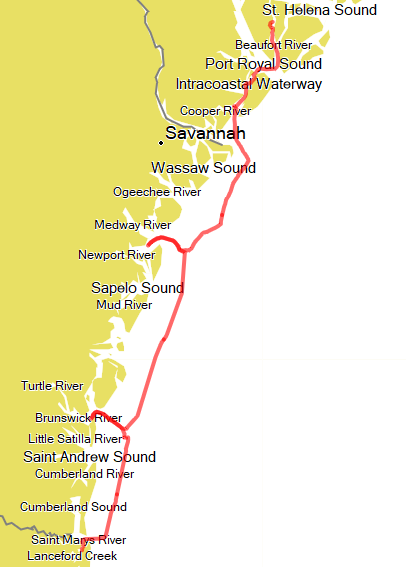Updated on October 28, 2021
Fernandina Beach and Back to Beaufort
We arrived in Fernandina Beach, Florida on March 11. After 4 years, Fernandina Beach had completed the rebuild of its marina damaged by Hurricane Matthew in 2016. It is now one of the best marinas along the East Coast. The downtown, across the street from the marina, was lively, with plenty of good restaurants, some of our favorites. We had no schedule, the weather forecast was poor, and Fernandina Beach was a pleasant place.
There were two great sources of entertainment. The pelicans had obviously learned the habits of the fisherman and dragnetters. Swooping down with the grace of a natural glider, they would swarm around the fishermen who were cleaning their catch at the dock, patiently begging for a bit of scrap. A dragnetter would pass by in the afternoon with a trail of dozens of pelicans looking for a free snack.
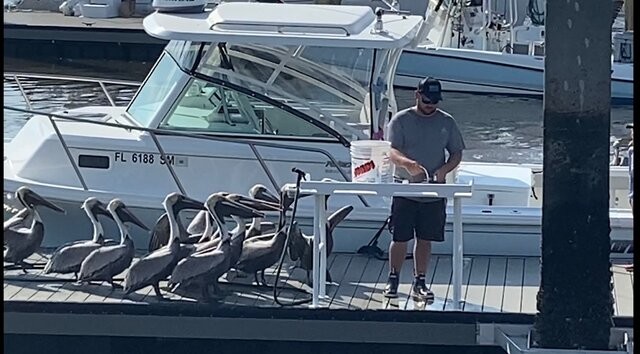
The other bit of entertainment was the constant flow of tourists up and down the docks. Quite a few would stop to admire SOPHIA’s classic lines and varnished wood. If I was out, there was always the comment, often touched with a bit of misplaced envy, “Beautiful boat”.
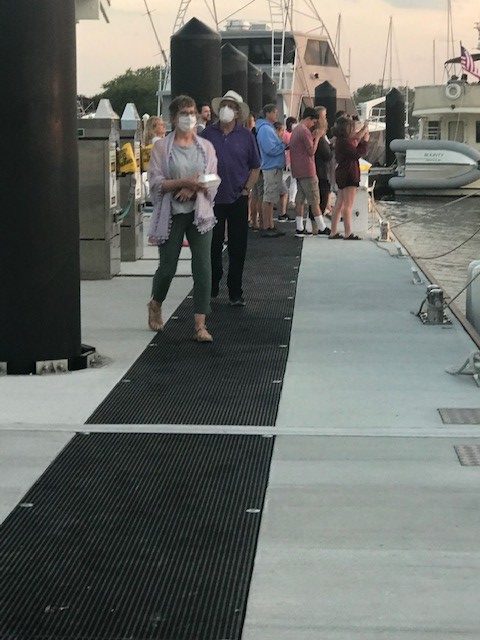
We had a number of days of foul weather toward the end of our stay, with winds out of the north at over 20 knots. There is a long fetch along the Cumberland River and waves grew to six feet at the dock. The bow bounced up and down and we wore through two mooring lines from the constant movement. To avoid bouncing together with the boat, Elena eventually went shopping in town.
I noticed a 30-foot boat coming in one evening with torn sails. She had gotten caught in some nasty weather with a crew of three. Besides the destroyed mainsail, the anchor had been torn from the bowsprit, wrapped around the keel and then around the prop. They told me they experienced 20-foot seas. Those gentlemen had a story to tell!!! I’m glad they survived and I’m glad I have Elena to keep me out of such trouble.
On another evening, a classic “tall ship” came in. While a bit sea-worn, she was still a beauty. She turned out to be a school ship loaded with teenagers. They also looked pretty weathered to me, but experienced at climbing the rig and handling lines. Maybe they were in fact learning something.
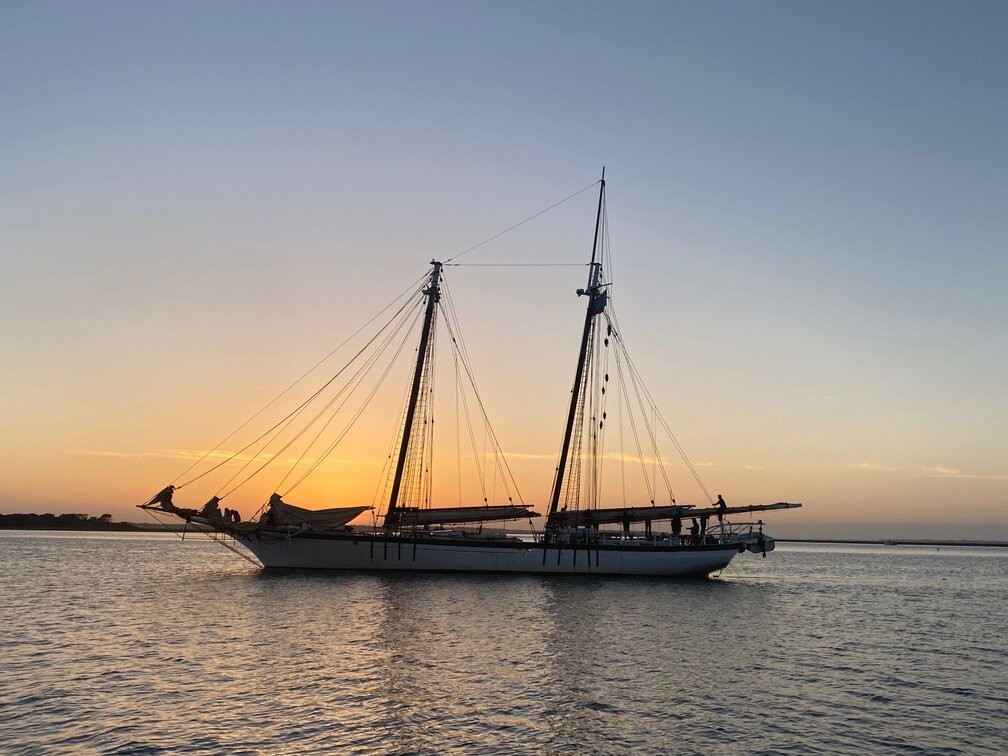
One morning I am on the dock and hear someone say “Elena”. Trying to get my bearings, I realize the source is a guy in a dinghy with his wife. After getting over my initial shock and some guy calling for my wife, and a few minutes of conversation with the couple, it turns out that she (Elena) was Russian and he (Marcel) was a Dutch oilman, and they were from New Zealand and had sailed across the Pacific and the Caribbean for the last two years.
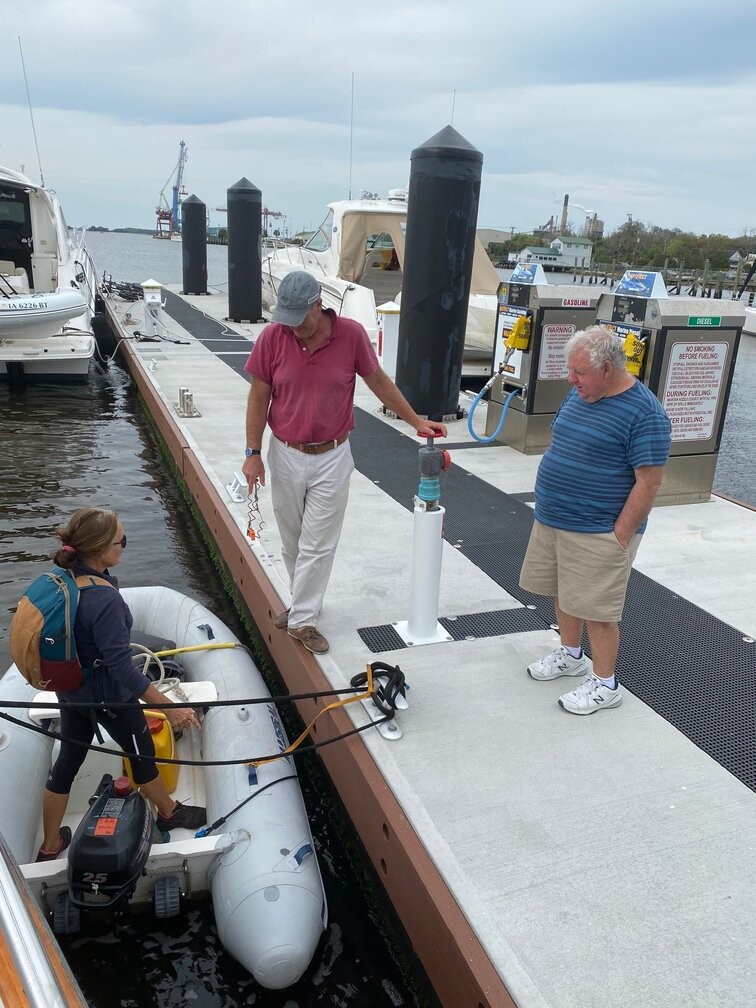
We also ran across Dale and Gale, marina mates from our home marina Herrington Harbour. Dale owns the local yacht brokerage and had spent the winter further down in Florida.
Our friend, Yelena (yes, now we have three Elena’s in this chapter), came up from Tampa to visit. I had work to do, but they went off to tour the local sites, specifically Fort Cinch and the Amelia Island beachfront.
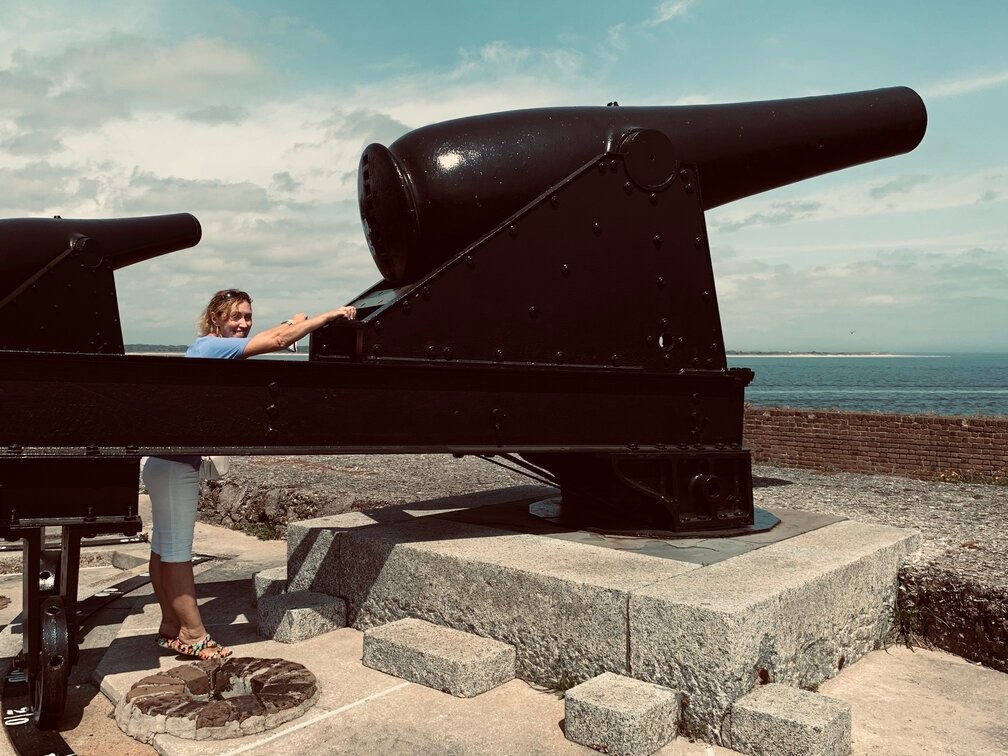
We stayed for a full two weeks instead of our intended seven days. This turned out to have the benefit of providing an opportunity for Elena to get her first COVID vaccine and for me to get my second shot.
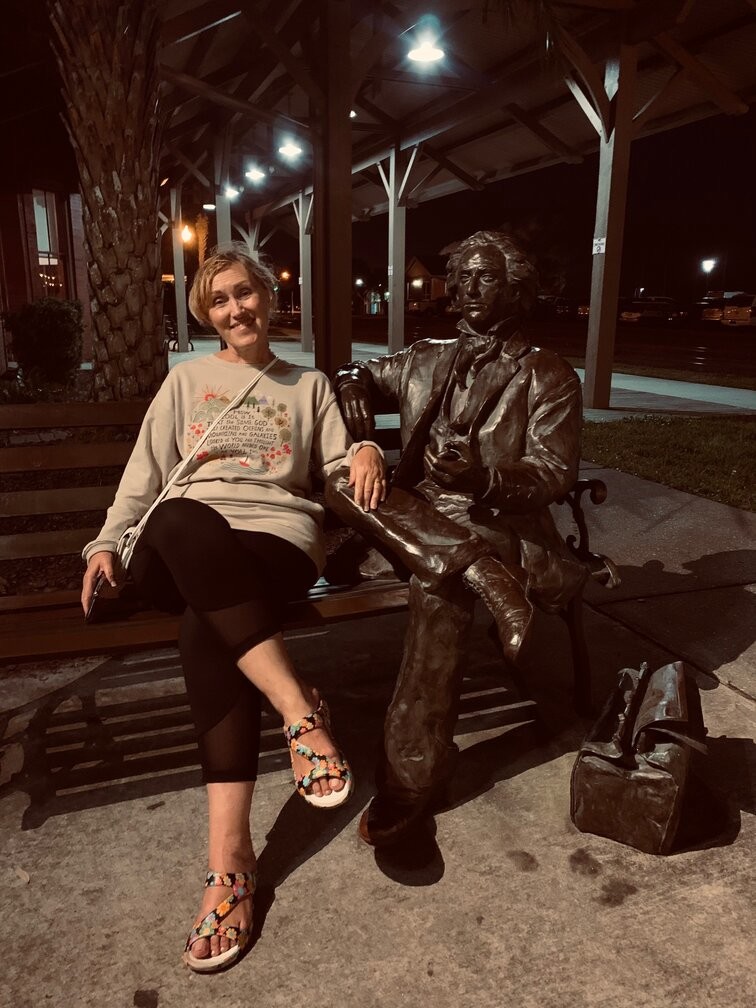
After taking on 33 gallons of fuel, we made preps for getting underway early on the morning of March 27th. As the morning dawned, the marina was surrounded by a thick fog limiting visibility to 100 feet. By 9am, the boats directly in front of us and right behind us had departed. By 10:30, we were underway with some patchy fog remaining. As we cleared the channel for St. Mary’s Inlet and into the Atlantic, we entered another fog bank, causing us to turn on the radar and to sound automated fog signals. (Note: We had replaced the radar and installed a loud hailer for fog signals during our latest refit. This was our first required use of both.)
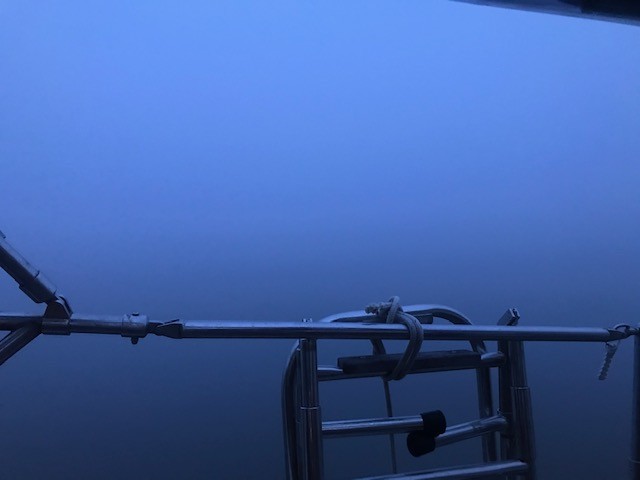
At 11am, we were finally out of the “soup”. We unfurled our foresails and raised out mainsail in light southerly winds. We “motorsailed” as we needed to make 5 knots to make up for our late start and to get to the next marina before it closed for the evening. At 5pm, we brought in our sails and entered St. Simon’s Sound. Instead of anchoring in the Sound as is our normal practice, we pulled into Golden Isles Morningstar Marina. It was another nice marina, recently rebuilt and we decided to spend the week. There was no “downtown” nearby, but the marina provided a loaner car. We made a swing through St Simon’s little village and nearby Brunswick. Most interesting was a slice of the overturned car carrier Golden Ray which had been barged into Brunswick. Towering over the downtown buildings, the piece of the wreck was visible from blocks away. Very impressive.

While at Morningstar Marina, we became acquainted with our neighbors, Tami, Teri, and Bella from Sea Breeze. Elena was enthralled with Bella, an Amazon parrot, who was as friendly as a puppy, but without the downside of being a dog (in Elena’s opinion). We visited them on the evening of our last day for “sundowners”, one of the few times we have spent time with others during the COVID pandemic.

Getting ready for another two days of motor-sailing, we topped off the fuel tanks with another 33 gallons of diesel. At first light on April 4th, we were underway, but just as soon as we cleared the dock we were again surrounded by fog. Lighting off the radar, starting fog signals and turning on our navigation lights, we crawled forward with less than 100 feet of visibility through the narrow channel and toward St Simon’s Sound. Elena was stationed on the bow listening for other boats, either their engines or their fog signals and for the navigation markers as they slowly appeared out of the haze, closer than I would have preferred, but well within safety margins. After 30 minutes, the fog lifted. We secured the “fog detail”, turning off the radar and ceasing fog signals, and bringing Elena back to the comfort of the cockpit.
The rest of the trip was mostly uneventful, but it was the long leg of our northbound trip back to Beaufort, some 55 nautical miles. With little wind (and with comfortably calm seas), we again motor-sailed into the near deserted St. Catherine’s Sound, arriving after dark at our favorite anchorage near a pelican colony that we call Pelican Island. On our well-traveled track on the way south, we had noticed a “shallow spot” of 8.5 feet near a shoal at near high tide. This time the depth dropped to 6.8 feet and we decided on the trip out we would try to find a different route to avoid this spot.
On the way in, near sunset, we were treated with a wonderful show of aerial acrobatics by what I assume to be groups of young pelicans. In groups of five to eight, they swooped and dived for no apparent reason except for fun and practice. There must have been at least a dozen groups and as the light faded, they flew back to the pelican colony. We were here a month ago and at the time, there was a large number of white pelicans, which I assume were fledglings. The birds we saw this evening had evidently graduated to the next stage of “pelicanhood”.
At 8am the next day, we were underway making 6.5 knots on a favorable ebb tide. We avoided the shallow area by steering south of our previous track and not seeing anything less that 10-foot depth. Elena reported our findings to the ICW Facebook group which was noted by the famous (to the cruiser community) “BOB423”, author of many ICW guides.

Coming in inside Hilton Head Island, we attempted to anchor off Daufuskie Island, our favorite anchoring spot. But the wind had whipped up out of the south, making the anchorage a bit rough. We worked our way to the east, anchored of the lee of Hilton Head Island, which turned out to be a nice, quiet anchorage. During the morning and early afternoon of April 7th, we made our way out to Port Royal Sound, up to Beaufort River and back to our “winter quarters” in Beaufort, South Carolina.
